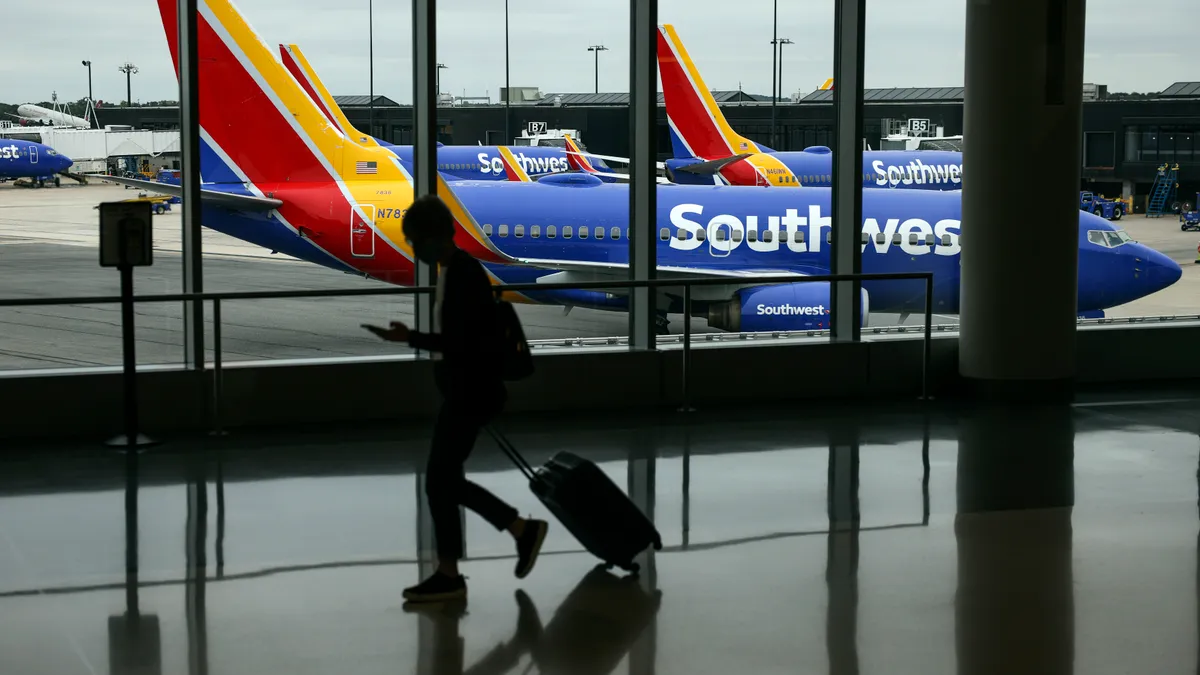When Winter Storm Elliott ground air travel to a halt, Southwest Airlines was midway through a CIO change.
The carrier’s longtime chief technologist, former CIO Kathleen Merrill, signaled her retirement in September. Lauren Woods, previously VP of technology, was appointed SVP and CIO in February. Merrill became an executive advisor at that time, after five years in the CIO role and nearly two decades with the company.
There were numerous contributing factors to the operational dysfunction and near shutdown that beset Southwest in December. Technological shortcomings — and IT leadership — were at the heart of them.
Southwest President and CEO Bob Jordan said the carrier’s processes and technology “generally worked as designed” during a January quarterly earnings call, while acknowledging the failure of crew rescheduling software to manage the volume of cancellations and reassignments in the storm’s wake.
The five other major domestic carriers recovered flight operations within a couple of days; it took Southwest almost two weeks.
“At Southwest, it wasn’t a nail that was wanting,” Ted Schadler, VP and principal analyst at Forrester, wrote in a January Blog post. “It was for want of a technology strategy to support the business — the want of an understanding that technology is the vital enabler of every business activity; the want of rigor in assessing the needs and gaps and costs of the technology vital to operations, let alone for innovation and growth; and the want of a technology executive in the room and at the helm where the highest decisions happen.”
Since joining Southwest in 2010, Woods has led several key technology initiatives, including the carrier’s adoption of AWS cloud infrastructure and the transformation of enterprise data platforms, a company spokesperson said.
In her new role, Woods reports to Linda Rutherford, chief administration and communications officer, and sits on Southwest’s senior management committee. She is not currently listed among the company’s senior executive leaders.
“The chief information officer position has reported to various leaders over the years, including the position that Linda Rutherford currently holds,” the spokesperson said in an email. “Linda Rutherford’s role as chief administration and communications officer brings together technology work happening throughout the company.”
Southwest did not provide further details on IT leadership at the company in the months between Merrill's retirement announcement and Woods' appointment.
Chains of executive command
Reporting structures and divisions of responsibility vary by industry, organization and company size. Elevating a chief technologist to the executive board is a relatively recent phenomenon outside of the tech sector and is by no means a universal practice.
CEOs traditionally keep a CFO, chief people or HR manager and chief legal counsel close at hand, but not necessarily a technology executive, Schadler told CIO Dive. That can be a mistake, particularly in aviation, finance and other tech-dependent industries.
“More and more sectors have elevated a chief technology representative to the executive CIO position,” Schadler said. “It’s increasingly an important part of how a company should be thinking, strategizing, planning and operating.”
While long-term strategy is crucial to enterprise modernization, proactive risk planning and in-the-moment crisis management can also be invaluable. Both require an executive CIO.
Large chunks of enterprise tech spending — nearly one-third, according to Forrester — initiate outside of IT. As chief officers responsible for cyber, data, digital, customer experience and sustainability technologies proliferate, it raises an unsettling question, Schadler said: “Who does the CEO call when there’s a technology problem?”
An empowered CIO can also ensure technology concerns make their way up the executive ladder to the C-suite. That dynamic was missing at Southwest, Doug Laney, data expert and innovation fellow at consulting firm West Monroe, told CIO Dive.
“There was a disconnect about concerns from the pilots and flight attendants on the state of technology in the company,” Laney said. “They were not necessarily explicit about fixing enterprise technology — it was about fixing technology as it relates to those functions.”
It's common practice in tech-driven industries to rely on contractors for IT infrastructure and services. Nearly 3 in 4 CIOs plan to increase spending and reliance on third-party IT and managed services this year, according to a recent Logicalis report, which surveyed 1,000 tech leaders.
Delta, for example, just extended its service agreement with IT infrastructure vendor Kyndryl. The deal covers core applications, including crew scheduling and aircraft maintenance software.
Outsourcing IT helps onboard expertise at a time of tech talent scarcity. It can also leave a company vulnerable in a crisis.
An executive CIO may not have hands on every tech project, but they know who to call.
Moving beyond IT triage
Southwest triaged its operations systems and implemented a warning dashboard as it returned to normal operations in January. Jordan has pledged $1.3 billion to IT maintenance and upgrades.
Yet, Woods still has a major hill to climb, as Southwest awaits the findings of a U.S. Department of Transportation investigation into “unfair practices” and a privately commissioned report from aviation industry consulting firm Oliver Wyman.
Up to eight additional upgrades to the crew scheduling system are planned this year, Woods told Reuters last week. Improvements to flight planning systems are also on Woods’ to-do list.
”Woods will play an important role in managing the airline's technology investments, upgrades and system maintenance totaling approximately $1.3 billion in 2023, alone,” Southwest told CIO Dive. “She is also heavily focused on the transformation of Southwest's enterprise data platforms that drive the company's data science, analytics, optimization and system integrations.”
Paying down technical debt — time spent patching rather than replacing legacy systems — is only part of the challenge. Crafting a strategic plan and selling enterprisewide modernization to the board is a bigger lift, one that’s vital to the business.
“Companies get acquired because they can't solve fundamental operational or technical problems without shutting down for a while,” Laney said. “A lot of companies do systems changes over a weekend or a time when they can shut down for a while, but it’s very difficult to implement new technology while continuing to operate the business.”
An executive CIO doesn’t have to be involved in every IT project. At a large company with many lines of business, that’s not practical. But there are ways to divide and conquer.
Laney recommends bifurcating the IT organization into separate “I” and “T” divisions, with an executive responsible for data and another accountable for infrastructure.
Southwest had a technology issue because the systems didn’t deliver the data that was needed, Laney said. “That speaks as much to a lack of data strategy as it does to technical debt.”























